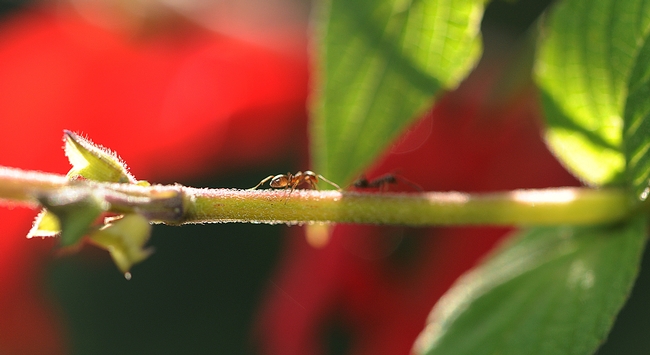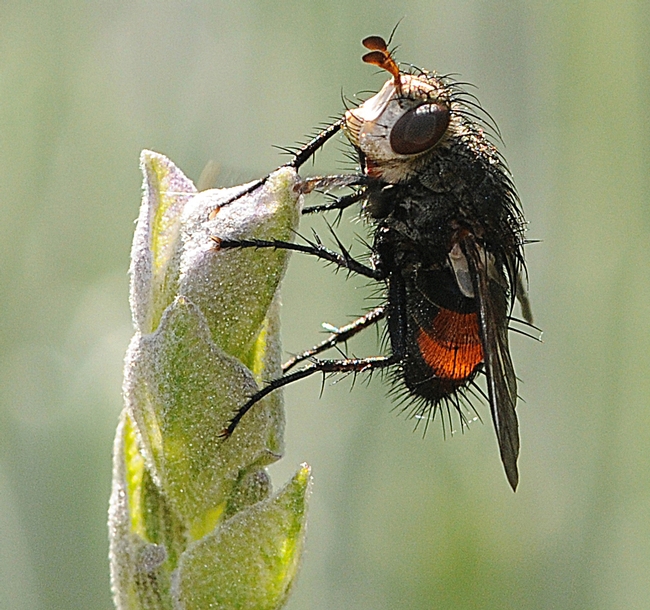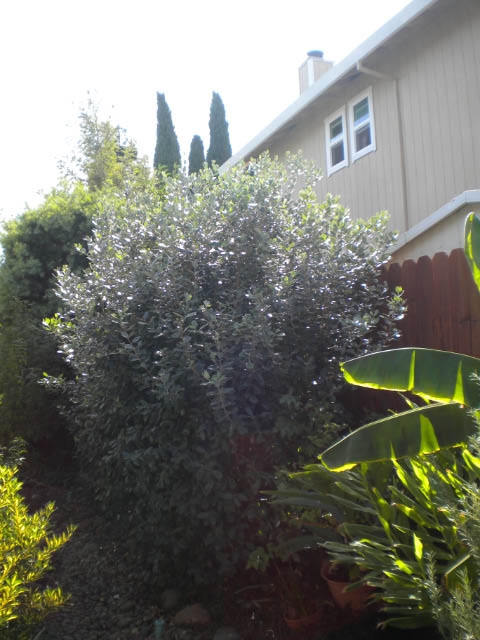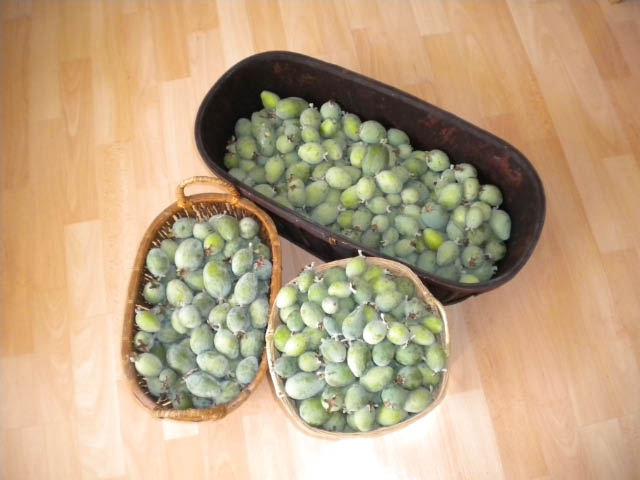UC Blogs
In Pursuit of Ants
Ants are such tiny critters. But they're much more than that. Much more. Ant specialist Brian Fisher, an entomologist with the California Academy...

Ants crawl along a vine. (Photo by Kathy Keatley Garvey)
UC farm advisor recognized for contributions to ag
UC Cooperative Extension farm advisor Joseph Connell was honored this week for his career-long contributions to Butte County agriculture, according to the Chico Enterprise. He was one of four community leaders recognized as part of the annual Farm City Celebration.
The Farm City Committee acknowledged Connell's broad range of scientific, practical and professional competence and his fairness. Connell began his UCCE career in 1977 and moved to Butte County in 1980, where he has been responsible for almonds, walnuts, olives, citrus and ornamentals.
Gold Spotted Oak Borer infesting oak trees in So Cal
Angela Meyers, Big Bear News
Although the limited number of oaks in Big Bear mean the Gold Spotted Oak Borer doesn't pose a serious threat in the community, the local newspaper advised its readers that trees in nearby Yucaipa and Live Oak are in danger. The story suggested readers interested in more information visit UC ANR's Gold Spotted Oak Borer website.
Farm Smart starts corny lessons for local students
Elizabeth Varin, Imperial Valley Press
The UC Desert Research and Extension Center is kicking off its new season of Farm Smart, which educates students about natural and renewable resources, including agriculture. The program combines hands-on activities, such as visiting a corn maze and making corn starch plastic, with historical lessons, on such topics as the uses of bandanas and traditions behind hoedowns, said Nancy Caywood Robertson, education outreach coordinator for the Farm Smart program.
“Our No. 1 rule is they have to have fun,” she said. “Are you having fun?” she asked the crowd.
Fabulous Feijoa
I have had a bumper crop of pineapple guavas, Feijoa sellowiana, this year. Originally from South America, these drought tolerant shrubs do well in our climate. They can grow up to fifteen feet high and wide, but with the annual pruning they get for our Wreath Workshop the ones in my yard don't quite make that. The leaves are a leathery green on top and a silvery gray underneath. They bloom in early summer. The fruit are ready between October and December and you know it's ripe when they fall on the ground. You just gather them up off the ground and clean them off.
The fruit are 1-2 inches long , dull green on the outside. They are neither pineapple or guava related, but someone thought they tasted like a cross between the two flavors. When I first started growing them about 20 years ago recipes were few and far between. Now on the Internet I've been able to find quite a few. We like the jam, muffins, chutney, and salsa the best, but I've also seen recipes for shrimp dishes and even ice cream.
Why Flies Are Fantastic
You want to know why flies are fantastic?They are, you know. Just ask Martin Hauser of the Plant Pest Diagnostics Branch, California Department of...

Tachinid fly (Peleteria species) on lavender. (Photo by Kathy Keatley Garvey)
Methyl iodide debate continues despite registration
In the 10 months methyl iodide has been registered in California, no one in Monterey County has used it or even applied to use it, but the debate over whether anyone should is fresher than ever, the Salinas Californian reported last week.
The soil fumigant methyl bromide, which growers have depended on for decades, will no longer be available starting in 2015. Methyl iodide, a potential substitute, is a harmful chemical, but can be used safely with proper precautions, said UC Cooperative Extension weed scientist Steve Fennimore.
"The professional fumigators are really good," Fennimore said. "If the public saw how the companies do the fumigation, they'd probably be more comfortable with them."
Another fumigant, chloropicrin, is widely used in combination with methyl bromide and methyl iodide to provide the most pest-free soil for growers.
"Chloropicrin is really strong against fungi, and methyl bromide is really strong against weeds," Fennimore said. "When you use them together, there's a synergy. They're very complementary."





